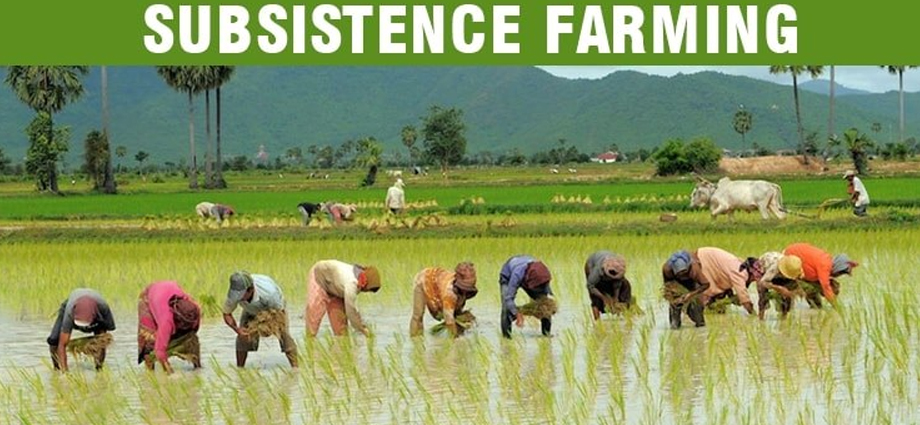
Intensive subsistence agriculture is a type of agriculture characterized by a high input of labor, fertilizers, and other resources in order to produce a high yield of crops from a small area of land. Some of the main characteristics of intensive subsistence agriculture include:
- Small landholdings: Intensive subsistence agriculture typically involves small landholdings, often less than two hectares in size. This is due to the high input of labor required, which limits the amount of land that can be effectively managed by a single farmer or family.
- High labor input: Labor is a key input in intensive subsistence agriculture, with farmers often working long hours to maintain their crops. This includes tasks such as planting, weeding, harvesting, and processing.
- Multiple cropping: Intensive subsistence agriculture often involves the practice of multiple cropping, where several crops are grown on the same plot of land in order to maximize yields and maintain soil fertility.
- Low use of technology: Intensive subsistence agriculture typically involves low levels of mechanization and technology, with farmers relying on hand tools and animal power to work the land.
- Dependence on natural resources: Intensive subsistence agriculture relies heavily on natural resources such as water, soil, and sunlight, and can be vulnerable to environmental factors such as droughts, floods, and pests.
Intensive subsistence agriculture is practiced in many parts of the world, including parts of Asia, Africa, and South America. It is often practiced in areas with high population densities, where land is scarce and farmers must maximize yields from small plots of land in order to support themselves and their families. Some examples of crops grown in intensive subsistence agriculture include rice, wheat, maize, and vegetables.